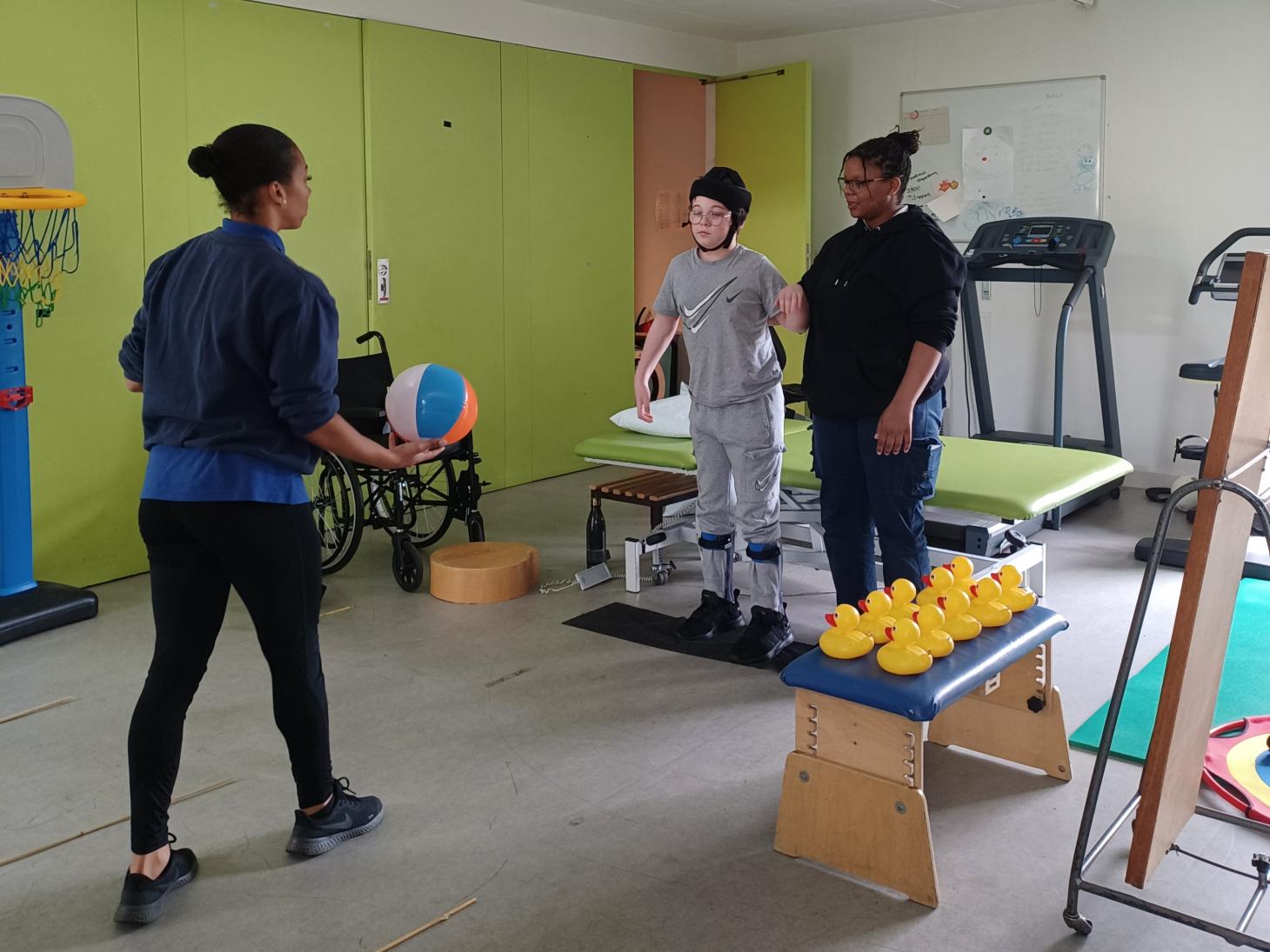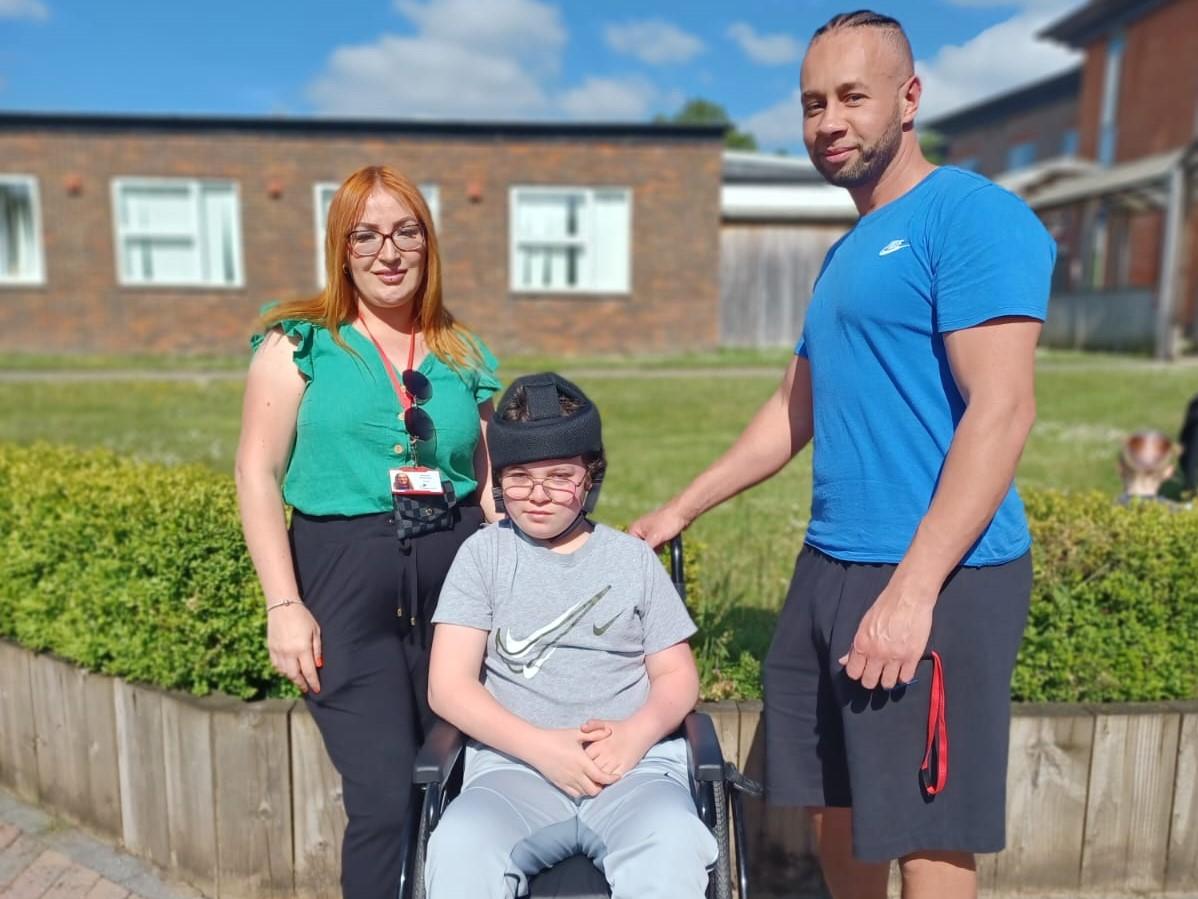As Riley approaches the end of his residential placement at The Children’s Trust, Mum Emma shares his story.
We were at home and had just enjoyed a typical New Year’s Eve, watching the fireworks with a Chinese takeaway. The next afternoon Riley started to complain of a headache, so he took some ibuprofen and went to bed.
I woke up to the sound of him crying at 2am and he started to be sick. I was comforting him, and then from nowhere he started screaming at the top of his lungs. He couldn’t tell me what was wrong he was just screaming.
I called 999 for an ambulance and they said that they were on strike that night but that they would be with me as soon as possible. As soon as I put the phone down Riley collapsed and was unable to speak. I could see he was trying to communicate with me but couldn’t. He quickly became unconscious, so I called 999 again.
They talked me through various procedures and tests. I cleared his airways and checked the rate of his breathing. The ambulance arrived an hour after the first call. They were brilliant when they did get there, but it was a long and terrible wait. They put him on a ventilator and injected him with medication and took us to Hillingdon Hospital.
In the hospital
When we got to hospital the doctors and nurses took him for a scan straight away, where they found out he had a major bleed on the brain. We had only been there for around half an hour when they said they had to transfer Riley to Great Ormond Street Hospital.
They took Riley in an ambulance with all the doctors and nurses – I couldn’t go with him as there was no room. My sister and Riley’s grandparents arrived to drive us there, and on the way I got a phone call from the surgeon to say that he needed my permission to take Riley into surgery. He said it was lifesaving surgery and he couldn’t guarantee it was going to work but we had to try. I asked if I could see him first and he said: “no, it’s now or never”.
So I said: “ok, take him. Just bring him back please.”
Then it was hours of holding my breath and praying to everyone and everything to let him be ok. He survived the operation, which was amazing, but the pressure on his brain was still extremely high.
Two days later they took him down for a second operation to try and find the cause of the bleed. Luckily at that point they found the aneurysm so they could treat it straight away. They fitted an aneurysm coil (a device that prevents further bleeding) and that put him on the road to recovery.
We spent the next five weeks at Great Ormond Street Hospital while Riley was recovering from the surgery. He was heavily sedated, unable to speak or move much more than lifting his head.
It was on a normal doctor’s round when it was first mentioned that Riley should come to The Children’s Trust for rehabilitation. My first reaction was that I felt horrified – I’m from London and my family had been around us every day until that point. I freaked out at the thought of going to Surrey, but once I had calmed down and looked into The Children’s Trust I thought: ‘he has to come here, there’s no better place for him to be.’
Arriving at The Children’s Trust
Riley was very early on in his recovery when we arrived at The Children’s Trust which had its pros and cons. We were lucky to get a place so quickly; but he was still sleeping a lot of the time because of the medication, and I was conscious that time was limited and we wanted to start therapy straight away. I shared my concerns with the team who were great and got him off the sedatives as quickly as possible.
In those first few weeks he progressed really quickly. It was such a relief to see him more awake, and his personality coming back. After his surgeries he couldn’t speak for weeks, so it was really hard to communicate. Thankfully he came on leaps and bounds when he got here, and he was discharged from speech and language therapy after about eight weeks.
Therapy programme
Each week he receives a personalised timetable which is chock-a-block with therapy and education sessions! Since we have arrived Riley has received speech and language therapy, music therapy, physiotherapy, occupational therapy, hydrotherapy and more. Alongside this he also has school sessions twice a day.

As we come to the end of his placement, his goals are now mostly physically orientated. He has physiotherapy twice a day with the team, and we work on his exercises together in his residential house as well. He also uses specialist equipment which helps with his limb movement disorder and strengthens his left arm and hand.
Riley adds: “Physiotherapy is the most important one for me. I want to be able to walk again and get some use out of my left arm again.”
Personalised sessions
The team take the time to find out what Riley enjoys so that they can motivate him through his interests. Before his aneurysm he always loved baking with his Aunty (I’m not much of a baker!), and here he has baking group once a week, which he loves. It helps his therapy as he is set goals of following instructions which helps his attention span and memory function, and weighing and whisking ingredients using his weaker arm.

Staying at The Children’s Trust
When we first got here it was a bit of a culture shock – we had been stuck in a hospital room for weeks so it was scary to come out of our bubble. But after a week or two we settled in, got to know the other families, got to see the other kids progress and it just makes you feel less alone.
If you’ve got to be somewhere in these circumstances, I’m glad it was here. The staff push to do the best for your child, and you can’t ask for any more than that. Everyone is so helpful and comforting. It’s lovely here, it really is.

Riley says: “Oak House is pretty good. We’ve had games night and a quiz night in here. Sometimes we do cooking in the Oak House kitchen. We have made fajitas.”
He’s come so far
The doctors in the hospital never talked about the potential to progress – I heard all the worst-case scenarios and they always said the damage was extensive and recovery wouldn’t be much. I didn’t want to have the doubting thoughts because you think if you have them, you’re giving up on your own child. We thought if we don’t have hope, we don’t have anything.
I heard about how The Children’s Trust was amazing before I got here, but we were praying for miracles and we got them by coming here.
When Riley took his first steps with his frame me and his Dad were just a mess. Seeing him walk was just incredible, there’s no feeling like it. When he got here all he could do was lift his head off the pillow for a few seconds, so every little bit of progress means so much because it was something we could only hope for.

Moving on
When we leave The Children’s Trust, we will go straight to Great Ormond Street Hospital as Riley needs to have what will hopefully be his final surgery. Unfortunately, Riley won’t be able to climb the stairs to our maisonette, so instead of going home we have to go back to Hillingdon Hospital while we wait for social housing.
We’ll be continuing with physiotherapy through The Children’s Trust which gives me some comfort because it’s home now. It’s all we’ve known the last few months, so it will help me ease back into reality a bit more.
Looking forward
The hope is that Riley will be able to walk independently for short periods of time when we leave here. He’ll still be wheelchair reliant but that is work for the future. He has been cleared to return to mainstream education, so our goal is to get him back to school so that he can get back to his life and see his friends.

What Riley has achieved in the last five months in remarkable. Even in the darkest days we held onto love, hope and our belief in Riley. His strength inspires us every day. The hard work is far from over, but we are so excited to see what the next five months of recovery brings.
